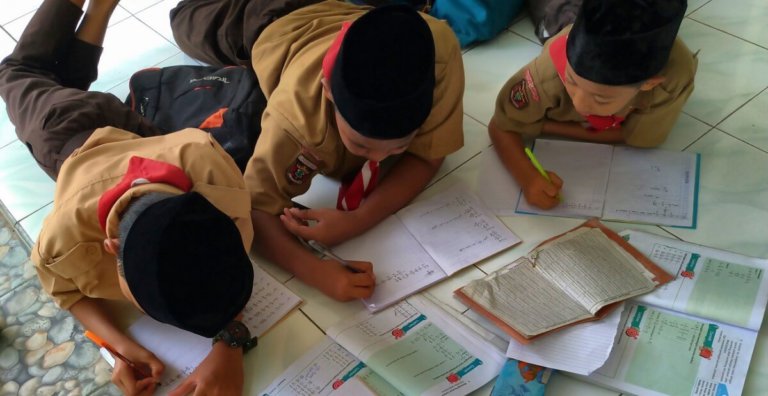
It can seem unthinkable to ascribe just 10 minutes of homework per day to students.
In countries like Singapore where the pursuit of top grades is intense, 15-year-old students are assigned 9.4 hours of homework weekly, according to data from the OECD. Teens in Shanghai spend the most hours per week on homework (14 hours) globally.
On the other extreme end of the spectrum, high school students in Finland get less than three hours of homework per week.
But in the US, the standard for decades has been the “10-minute rule,” a guideline supported by both the National Parent Teacher Association (PTA) and the National Education Association.
This rule recommends that students are assigned a daily maximum of 10 minutes of homework per grade level. This mean that a third-grader, for example, should do 30 minutes of homework each night. When they reach high school, this goes up to about two hours each night.
Proposed by Harris Cooper of Duke University, the leading researcher on homework, middle-school students are recommended to do take on 90 minutes per day of homework – this is the optimal figure to enhance their academic achievement. For high school students, they should aim for 90 minutes to two and a half hours per day.
OECD data show 15-year-olds are assigned 6.1 hours of homework per week. This largely corresponds with a 2003 research from the Brookings Institution and the Rand Corporation.
The research had found that despite popular assumption, the majority of students in US schools only spend less than an hour a day on homework. This figure applies regardless of grade level and has been so for most of the past five decades, according to research from the Brookings Institution.
“Homework is beneficial, but only to a degree.” Here’s what the research shows for different grade levels. https://t.co/s3MLK1Uj8n
— edutopia (@edutopia) September 28, 2019
Tom Loveless, a senior fellow in Governance Studies and director of the Brown Center on Education Policy at the Brookings Institution said, “data do not support the view that the homework burden is growing, nor do they support the belief that the proportion of students with a lot of homework has increased in recent years”.
In the updated 2014 version, research again shows “little evidence that the homework load has increased for the average student” despite news reports depicting students are now burdened by so much homework that their health and well-being are under attack. Those assigned more than two hours of homework per night are a minority, the research found.
“In national polls, parents are more likely to say their children have too little homework than too much. And a solid majority says the amount of their children’s homework is about right,” the report said.
For the minority who are struggling with too much homework daily, studies show this would cause them more harm than good.
When middle school students were assigned more than 90-100 minutes of homework daily, they ended up performing worse on maths and science, one 2015 study found. It could also be counter-productive once fatigue, stress, and a loss of interest in academics set in.
But all this focus on numbers should not distract us from the quality of homework set. Different students have different capabilities. Struggling students – or economically disadvantaged ones – may end up taking twice as much time to complete an assignment compared to a more able peer.
Writing in Education Next, Janine Bempechat, a clinical professor of human development at the Boston University defined high-quality homework as: “Assignments that are developmentally appropriate and meaningful and that promote self-efficacy and self-regulation. Meaningful homework is authentic, allowing students to engage in solving problems with real-world relevance. More specifically, homework tasks should make efficient use of student time and have a clear purpose connected to what they are learning.”
More quality in homework also makes students believe in their competence when they accomplish something, especially for struggling students.
“Students whose teachers have trained them to adopt strategies such as goal setting, self-monitoring, and planning develop a number of personal assets—improved time management, increased self-efficacy, greater effort and interest, a desire for mastery, and a decrease in helplessness,” Bempechat wrote.







